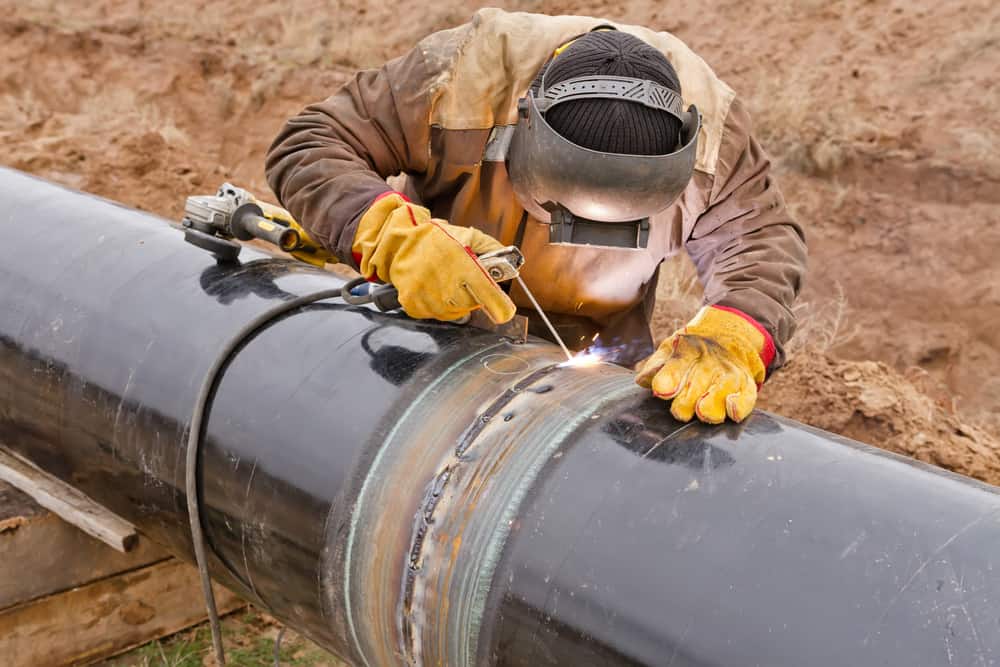Taking Full Advantage Of Effectiveness: Pipeline Welding Evaluation Ideal Practices
By implementing best practices for pipe welding evaluation, companies can enhance procedures, decrease mistakes, and boost task timelines. The thorough interest to information needed in welding examination holds the crucial to the long-lasting longevity and dependability of the pipelines, making it a subject of utmost value in the industry.

Importance of Efficient Welding Assessments
Effective welding inspections play a critical duty in making sure the structural integrity and security of pipelines. Proper inspections are necessary to identify any kind of defects, discontinuities, or blemishes in the welded joints that can compromise the total honesty of the pipeline system. By carrying out thorough inspections, assessors can spot problems early, protecting against potential leakages, ruptures, or failures that could have severe environmental and security repercussions.
Prompt and exact welding examinations likewise help in preserving conformity with industry standards and policies. Complying with these standards is not only a lawful need yet additionally an essential measure to ensure the dependability and durability of the pipes. Reliable evaluations can add to set you back financial savings by decreasing the need for costly fixings or replacements due to welding problems that could have been avoided or dealt with throughout the examination procedure.
Utilizing Innovation for Inspections
To enhance the effectiveness and precision of pipeline welding examinations, the assimilation of innovative modern technologies has actually come to be increasingly essential in making certain precise and extensive assessments of bonded joints. One of the vital technical developments in pipe welding assessments is the use of automated ultrasonic testing (AUT) systems. By embracing these technological options, pipe welding examinations can be carried out a lot more efficiently, leading to higher high quality welds, boosted general safety and security, and reduced task timelines.
Establishing Clear Examination Procedures
Developing clear inspection procedures is vital for guaranteeing uniformity and integrity in the pipe welding inspection procedure. These procedures offer as a collection of guidelines that outline the specific actions, standards, and methods to be complied with during examinations. By plainly specifying the assessment methods, all examiners included in the procedure can recognize their duties and roles, resulting in a more standardized and effective evaluation workflow.

Routine evaluation and updates to the evaluation protocols are likewise important to adapt to changing industry requirements and needs. By constantly refining and boosting the protocols based upon comments and lessons learned, pipe welding examinations can promote the finest quality requirements and governing conformity.
Training and Qualifications for Assessors

Educating and certifications for inspectors are extremely important in making certain the competence and efficiency of individuals tasked with managing pipe welding procedures - Pipeline Welding Inspection. Properly trained assessors have the needed knowledge and skills to effectively assess weld quality, adherence to welding procedures, and conformity with sector criteria and policies
Qualifications, such as those provided by the American Welding Culture (AWS) or the American Petroleum Institute (API), confirm an inspector's competence and capability to perform assessments to the greatest standards. These certifications commonly require strenuous training, examinations, and continuous expert advancement to make certain that assessors remain present with the newest advancements in welding modern technology and assessment techniques.
In enhancement to formal accreditations, constant training programs play a critical function in improving inspectors' capabilities. These programs cover a large range of topics, including welding procedures, issue discovery, safety methods, and pertinent codes and requirements (Pipeline Welding Inspection). By purchasing detailed training and accreditations for examiners, firms can promote the honesty of their pipe welding jobs and alleviate the risks article source connected with low quality welds
Continuous Renovation in Examination Processes
Building upon the foundation of qualified and trained assessors, continual enhancement in evaluation procedures is vital for ensuring the continuous quality and conformity of pipeline welding procedures. By executing a system of constant enhancement, pipe welding inspection processes can advance to meet the transforming demands of the industry, technological developments, and regulatory requirements. This entails routinely examining and assessing evaluation methods, devices, and procedures to determine areas for enhancement.
One trick element of constant renovation in evaluation procedures is responses. Gathering input from inspectors, welders, engineers, and various other stakeholders enables a comprehensive assessment of present techniques and the recognition of potential areas for improvement. Additionally, leveraging data and analytics can provide useful understandings into the performance of assessment processes, enabling informed decision-making for optimization.
Moreover, purchasing training and growth programs for assessors can ensure that they are outfitted with the most recent understanding and abilities to do their tasks effectively. Continuous improvement is a dynamic procedure that needs devotion and dedication from all stakeholders to drive quality in pipe welding inspection methods.
Conclusion
Finally, maximizing performance in pipe welding examinations next is critical for making sure the quality and security of infrastructure projects. By utilizing technology, establishing clear protocols, supplying correct training and qualifications for assessors, and continually boosting inspection processes, organizations can improve their procedures and minimize dangers. It is crucial for industries to focus on efficient welding assessments you can check here to maintain high requirements and satisfy regulatory needs.
Effective inspections can add to set you back financial savings by decreasing the requirement for costly repairs or substitutes due to welding flaws that could have been avoided or dealt with throughout the evaluation process.
Developing clear evaluation protocols is essential for guaranteeing consistency and reliability in the pipeline welding inspection process. By plainly defining the assessment methods, all inspectors entailed in the process can recognize their duties and responsibilities, leading to a more reliable and standardized evaluation process.
Clear assessment protocols assist in decreasing the chance of errors or oversights during the examination process.Structure upon the foundation of trained and certified examiners, continual enhancement in inspection procedures is necessary for making sure the recurring quality and conformity of pipe welding operations.